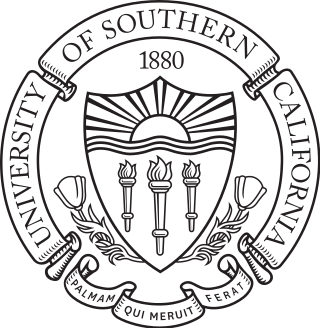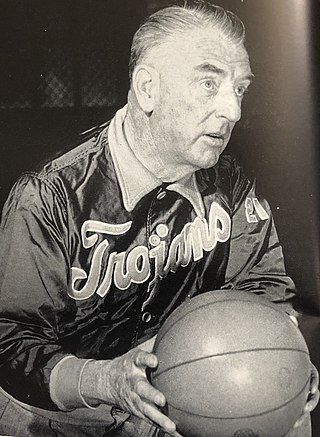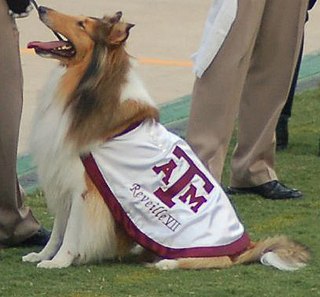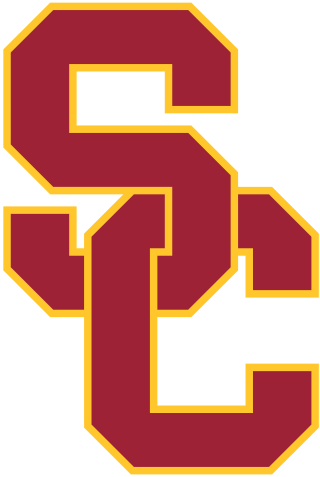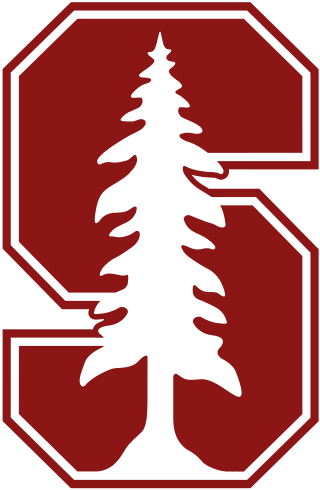Origins
There exists a wide range of possible stories for Tirebiter's origin.
One claims that a stray dog was discovered by a group of USC students at Currie's Ice Cream parlor and that one student remarked that the dog looked like a Navy V-12 student named George Kuhns. Thus, the dog was dubbed "George".
Another story was that the dog was the pet of a local couple and that he was initially named "Leo". When the couple split the dog was abandoned before being adopted by a local woman, Ann Schreiber. She was supposedly a great lover of dogs who wanted to provide for the lost dog. She named him "George" due to the resemblance he bore to a friend of hers. [2]
Another origin story was claimed by Dan Schiavone, president of the Trojan Knights, on the occasion of a memorial ceremony honoring Tirebiter on September 21, 1950. Schiavone claimed that Tirebiter was a K-9 police dog that was discarded from the program and subsequently found as a stray on USC's campus. [3] However, the veracity of this account is somewhat in question due to the context of the speech and this being the singular mention of such an origin.
He received the surname "Tirebiter" because he would bite at the tires of cars he chased down Trousdale Parkway, which bisects the campus. (Today Trousdale is only open to foot traffic.)
George Tirebiter I
The first George Tirebiter was for a period of around six years the unofficial mascot of USC. He was notable for chasing down passing cars and nipping at their wheels. The lovable shaggy mutt quickly endeared himself to the student body. He was pampered by the fraternities and sororities in USC's Greek community, routinely being carried back and forth from campus and being fed ice cream. [4]
In 1947, the student body urged the student government to designate George Tirebiter as the official mascot of USC. In an elaborate celebration involving a parade of 30 cars, a marching band, and campus celebrities, George Tirebiter was crowned the official mascot of the University of Southern California on October 22, 1947. [5]
Shortly after his coronation as official mascot, George Tirebiter was kidnapped by UCLA students on October 30, 1947. He was taken from USC's campus and sedated. Then the UCLA students shaved the letters U-C-L-A into the fur on Tirebiter's back. To take the prank one step further they took Tirebiter by the Los Angeles Times to be photographed for the paper. After this ordeal, Tirebiter was finally returned to USC in a "doped and confused" state. [6]
Once he became the official mascot, the Trojan Knights became his handler at campus events and football games. At football games, Tirebiter would be led out onto the field with the marching band and for the length of the game stand in front of the student rooting section.
George became further endeared to the student body when he bit UCLA mascot Joe Bruin on the nose at a home football game and chased after Oski, the Golden Bear mascot of the University of California Berkeley, at another home game.
In 1948, Tirebiter got into trouble with city health officials because of two incidents of biting people and his semi-stray status. The city presented an ultimatum to USC. They required that someone or some organization assume responsibility and ownership for the dog or he would be turned into the pound. [7] In the wake of these events on September 29, 1948, the Trojan Knights decided that they would take responsibility for Tirebiter's housing, food, ownership, legal liability, and transportation. [8]
After assuming responsibility for the dog, the Trojan Knights built a doghouse on Bovard Field for him. Due to Tirebiter's loud barking and his proximity to classrooms, numerous professors complained about the noise and disruption he caused. One professor actually proposed that one student should always be on "Tirebiter duty" to pet the dog and make sure he did not disrupt class. [9]
Throughout Tirebiter's time as USC's unofficial and official mascot, many people attempted to describe what kind of dog Tirebiter could possibly be. The most common characterization was that he was merely a pound mutt. Other attempts, even by canine experts, had similarly underwhelming conclusions. A zoology professor described him as "sort of an Airedale Terrier," but conceded that "it would take another 100 years of breeding to produce another George." [10]
In 1949, Tirebiter's already surly nature began to get worse. The Trojan Knights decided to place him in the care of a local animal shelter with the hopes that he would recover. However, his condition did not improve. In early 1950, he no longer even recognized or acknowledged his caretakers. Eddy and George Prussell, former presidents of the Trojan Knights, conferred with Dean of Students Bernard L. Hyink to decide on a solution. They decided to send him to the farm of Bill Hubbard, a Trojan alumnus, in El Centro, California, for the summer so that the dog could recover. Sadly, sometime during June 1950, Tirebiter was run over by a passing car on the farm and killed. For the next three months, however, this news was not disseminated to the public. It was not until September 19, 1950, that Tirebiter's fate was known. A Daily Trojan writer routinely asked Dan Schiavone, the president of the Trojan Knights, "How's Tirebiter getting along?" Schiavone responded matter-of-factly, "He's dead." This news was then broken on September 20, 1950, by the Daily Trojan with the full page headline "Tirebiter is Dead!" [11]
The student body then planned a memorial ceremony for Tirebiter on September 22, 1950. The ceremony was led by Schiavone and consisted of a parade of convertibles with black bunting, a marching band, and the student body. Upon reaching Tirebiter's cement footprints, immortalized during Tirebiter's coronation in 1947, a memorial wreath was laid and a trumpeter played "Taps" as the campus said farewell to its beloved canine mascot. [12]
Successors
Search for a successor
The day before the memorial ceremony for Tirebiter I, plans were already being made to find a successor of some sort for the mascot. A ballot was printed in the Daily Trojan with choices of "George Jr. , Other Animal, Statue of George, or Other Object.". [13] Nominations of all sorts began to pour in from the student body. Through one day of voting, Delta Tau Delta's pedigreed boxer "Sully" led the voting. Behind him were the Trojan Knights's proposed successor "George Jr.", who they claimed was Tirebiter I's son, and the Acacia fraternity's bulldog "Pythagoras." In addition to these early leaders, a variety of other canines and memorials were proposed. [14]
On September 25, 1950, Acacia decided to withdraw Pythagoras from the campaign. Don Gibbs, the fraternity president, explained, "We do not feel that a fraternity-owned dog would make a good mascot because of the competition between fraternities. A true mascot must have the complete backing of the entire student body in promoting school athletic spirit. Therefore, we are withdrawing 'Pythagoras'." [15]
Additionally on September 25, it was announced that "Hector the Horse", a spotted Palomino horse had been entered into the race by the Trovets, a spirit and service organization. Floyd McCann, president of the Trovets, claimed, "We feel that Hector the Trojan Horse is a much more dignified and appropriate symbol of SC tradition than some dog. George was a character in his own right and voluntarily adopted the Trojans. But we don't believe he can be replaced by draft methods." [16] This quote, now seems quite prescient in light of USC's adopting its iconic mascot Traveler (mascot) in 1961.
On September 26, it became a showdown between "George Tirebiter II" and "Hector the Trojan Horse" after the withdrawal of Sully, the Delta Tau Delta boxer. [17] Although Hector was leading by a slim margin of 36 votes, possible financial problems with Hector were reported by the Daily Trojan. They calculated that it would be considerably more expensive to have an equine mascot than a canine mascot. This was due to Hector not being owned by USC, but rather being rented from a nearby stable. [18]
On September 28, it was announced that George Tirebiter II would be the official successor to Tirebiter I. The final vote in the student body senate was guided by Tirebiter II's victory in the Daily Trojan student poll 800 votes to Hector's 518. It is a remarkable increase in voting in one day that finally decided the winner. Tirebiter II's candidacy was most likely aided by the financial questions relating to Hector's ownership and upkeep. [19]
Tirebiter II
George Tirebiter II was named the official mascot on September 28, 1950. He made his official debut at a football spirit rally for the USC-Iowa game on September 29.

